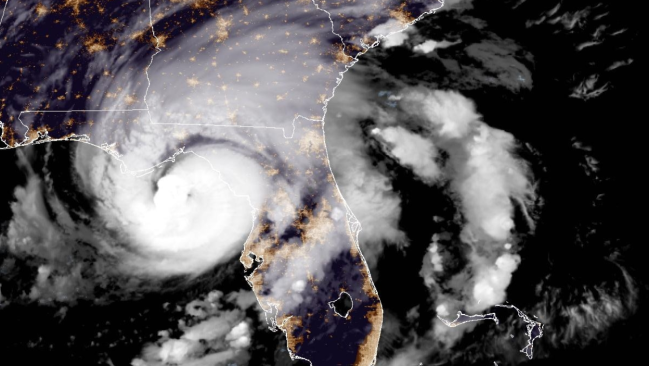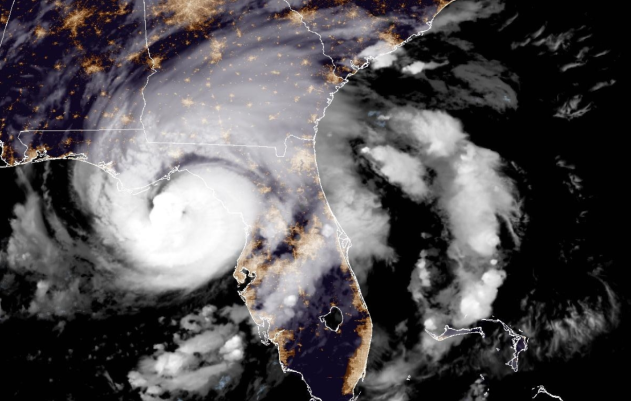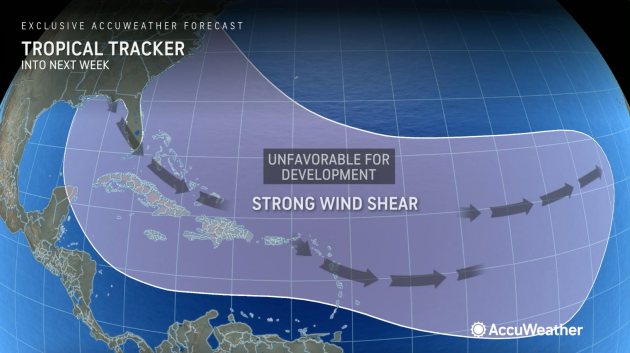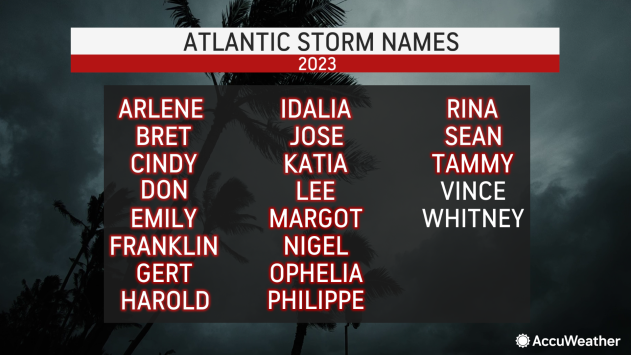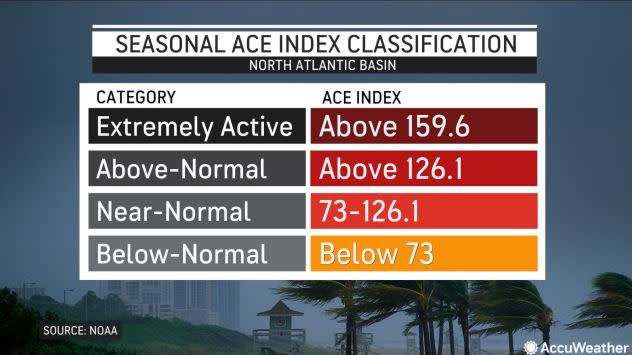AccuWeather declares Atlantic hurricane season over for the US
The 2023 Atlantic hurricane season has been well above the historical average in terms of the number of storms, although compared to recent hyperactive seasons, it has largely flown under the radar, as the majority of the tropical storms and hurricanes have remained over the open waters of the ocean. With only a few weeks left before the season officially ends on Nov. 30, AccuWeather is ready to issue a critical update for the remainder of the season.
Of the 19 named storms this year, only three made landfall in the United States as bonafide tropical systems. Tropical Storm Harold was the first to strike, making landfall on Padre Island, Texas, on Aug. 22. One week later, Hurricane Idalia roared ashore in Florida as a powerful Category 4 hurricane, the strongest system to make landfall during the season. Tropical Storm Ophelia was the third and final tropical system to directly impact the contiguous U.S., making landfall in North Carolina on Sept. 22.
Hurricane Lee made a close brush to the U.S. with some impacts being felt along the coast of New England, but the storm ultimately made landfall in Nova Scotia on Sept. 16. Philippe impacted the same parts of the U.S. and Canada in early October, but did so after transitioning from a hurricane to a tropical wind and rainstorm.
 |
There are still three weeks left in the waning hurricane season, but the remainder of the year will not resemble the heart of hurricane season.
No direct U.S. impacts are expected throughout the remainder of the 2023 Atlantic hurricane season, AccuWeather experts say.
The call was made after AccuWeather Veteran Meteorologist Dan Kottlowski, AccuWeather Long-Range Expert Paul Pastelok and AccuWeather Tropical Meteorologist Alex DaSilva analyzed ongoing weather patterns across the basin and various weather forecasting models.
"The hurricane season is over for the United States, we are not expecting any [more] landfalling storms," AccuWeather Chief On-Air Meteorologist Bernie Rayno added. "Before we make an announcement like this, we don't do so without a lot of thought and a lot of care."
 |
A satellite image of Hurricane Idalia as it neared the Florida coast early Wednesday morning as a Category 4 storm. (NOAA/GOES-EAST) |
One of the biggest factors of the late-season hurricane forecast is wind shear, which will suppress tropical activity in the coming weeks.
Wind shear is the change in wind speed and direction throughout different layers of the atmosphere. For a tropical system to develop and strengthen, wind shear needs to be low. The higher the wind shear, the more difficult it is for a tropical system to organize and strengthen.
"It's not a 0% chance of development, but it [will be] very, very difficult for tropical development from here on out," Kottlowski said.
 |
Despite the widespread disruptive winds, there is one other factor that could help a storm spin up.
Water temperatures across most of the Atlantic hurricane basin remain above the historical average, providing a key ingredient to fuel a fledgling tropical system. While the chances for new tropical development are low, a small break in the disruptive wind shear could present an opportunity for a new tropical system to tap into the warm waters and take shape.
"The area that we are looking at right now is the southwestern Caribbean," Kottlowski said. However, no system is anticipated to form in this area in the short term.
Even if a tropical storm does develop in the Caribbean, it is unlikely to make a direct strike on the contiguous U.S.
If two systems overcome the odds and become named tropical storms before the end of the year, it would propel this season into historic territory.
A burst of early-season activity followed by a frenzy of storms from mid-August through October used up all but two of the 21 names designated for the 2023 season. Vince and Whitney are the only names that have yet to be used.
The tally does not include the unnamed subtropical storm that briefly developed over the Atlantic Ocean in January and Tropical Depression 21, which tracked over the western Caribbean in late October.
 |
There have only been three seasons in history when the list of predetermined names was exhausted, the first of which was the historic 2005 season, which generated 28 named storms, followed by the 2020 season, which had 30 named storms, and the 2021 season, which featured 21 named storms. The historical average for an Atlantic hurricane season is 14 named storms.
The near-record number of storms paired with several long-lived hurricanes helped to boost the season's Accumulated Cyclone Energy (ACE). That is a metric that meteorologists use to measure the intensity and longevity of tropical systems. A weak, short-lived system will generate a small amount of ACE, while a powerful hurricane lasting more than a week results in a large ACE.
As of Nov. 7, the ACE for the 2023 season was 145.6, above the historical average of 122.5, according to Colorado State University. Lee was responsible for 25% of the season's total since it was a hurricane for nearly 10 days and peaked at Category 5 intensity.
This year's ACE is just a tick below the 2021 season, which had an ACE of 145.7. However, it was a far cry from the historic 2005 season which featured seven major hurricanes, including four Category 5 storms and ended with an ACE of 245.3 -- the highest on record since the weather satellite era began in the 1960s.
 |
If three named storms manage to develop before the end of 2023, a new naming system will be used for the first time.
Before the 2022 season, when more than 21 storms developed, the Greek alphabet was used to name storms, starting with Alpha. However, the World Meteorological Organization announced that the use of the Greek alphabet would be retired and replaced with a supplemental list of names.
The first name on the list of additional storm names is Adria.
Want next-level safety, ad-free? Unlock advanced, hyperlocal severe weather alerts when you subscribe to Premium+ on the AccuWeather app. AccuWeather Alerts™ are prompted by our expert meteorologists who monitor and analyze dangerous weather risks 24/7 to keep you and your family safer.
